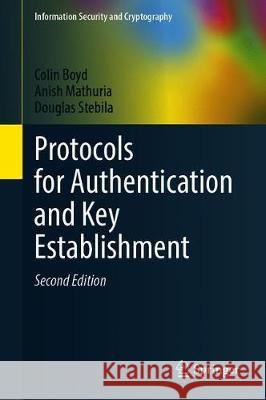Protocols for Authentication and Key Establishment » książka
topmenu
Protocols for Authentication and Key Establishment
ISBN-13: 9783662581452 / Angielski / Twarda / 2019 / 521 str.
Kategorie:
Kategorie BISAC:
Wydawca:
Springer
Seria wydawnicza:
Język:
Angielski
ISBN-13:
9783662581452
Rok wydania:
2019
Wydanie:
2019
Ilość stron:
521
Waga:
0.99 kg
Wymiary:
23.5 x 15.5
Oprawa:
Twarda
Wolumenów:
01
Dodatkowe informacje:
Bibliografia











